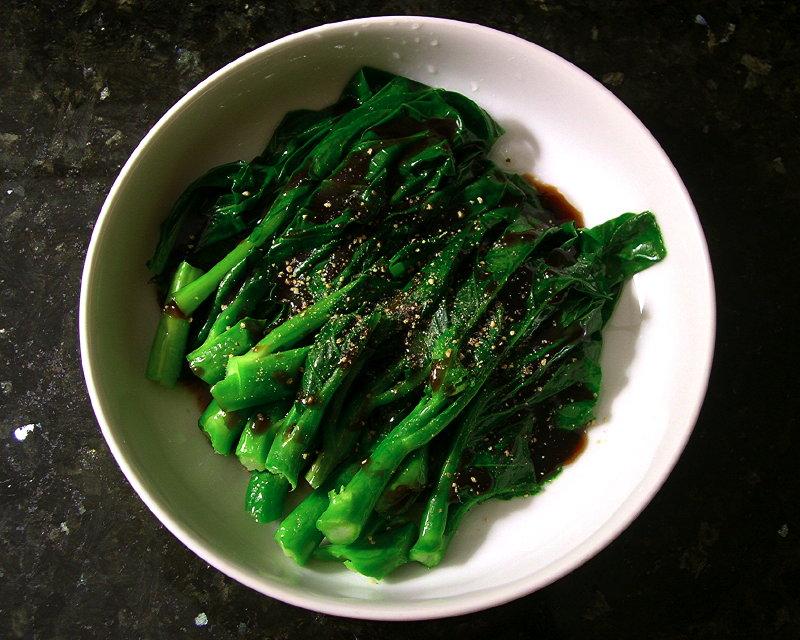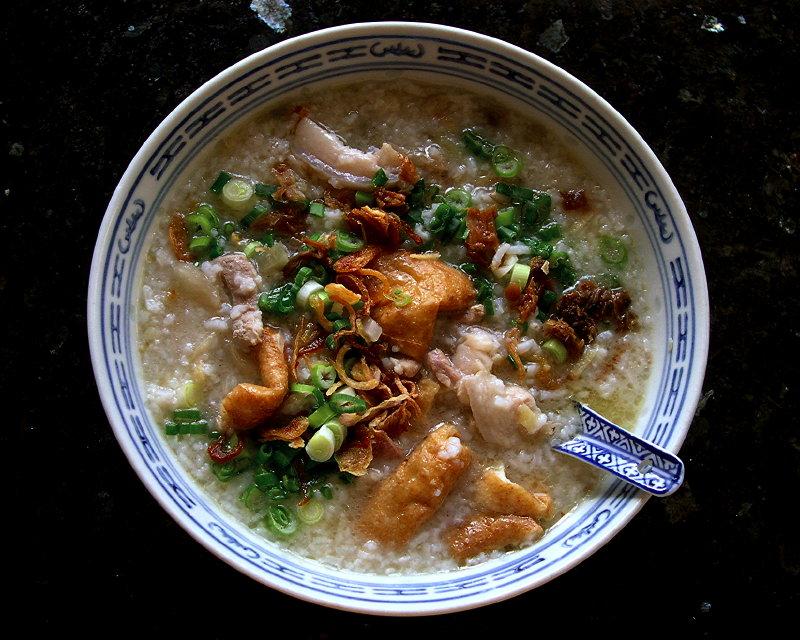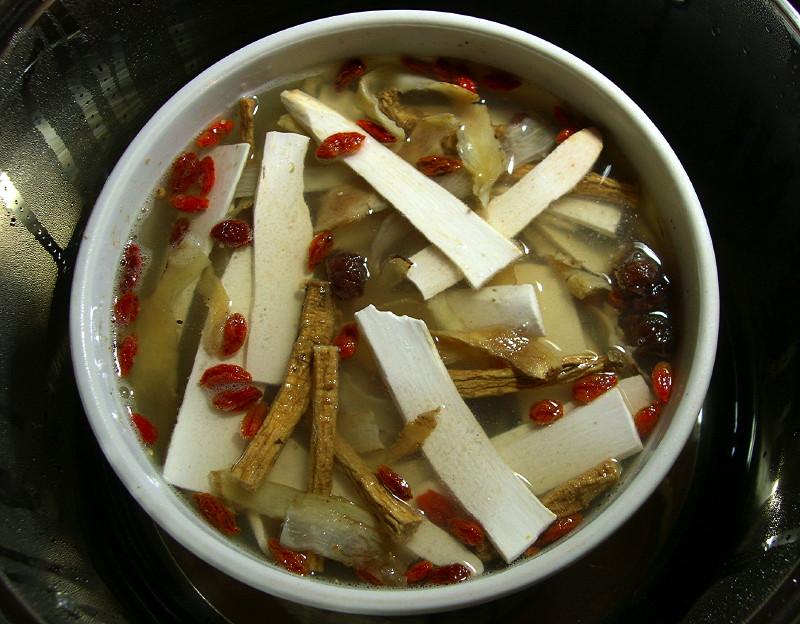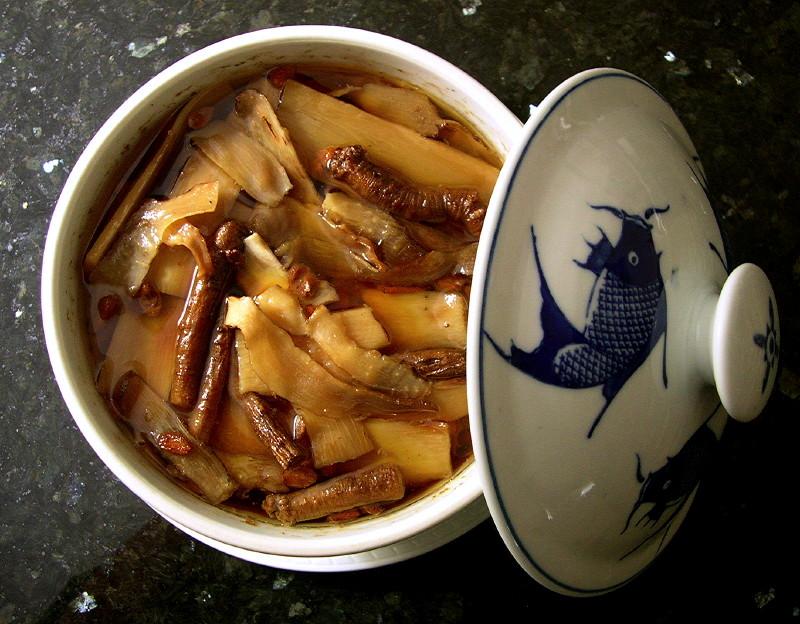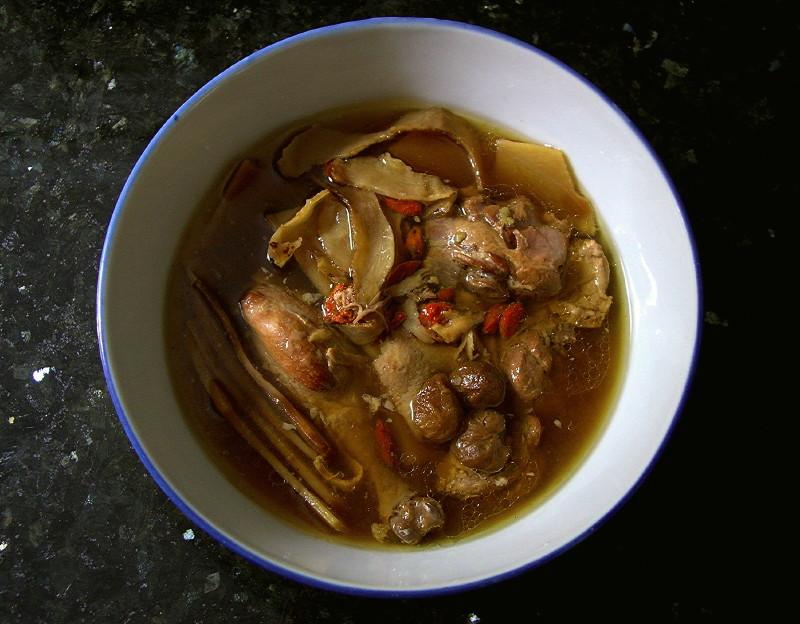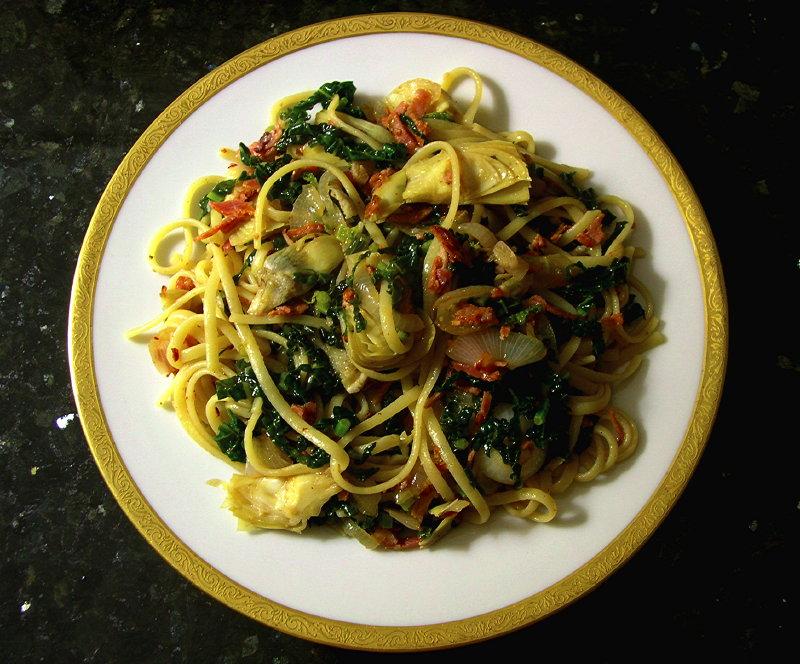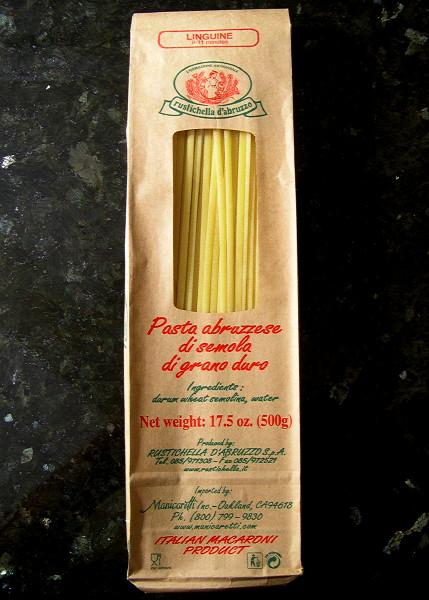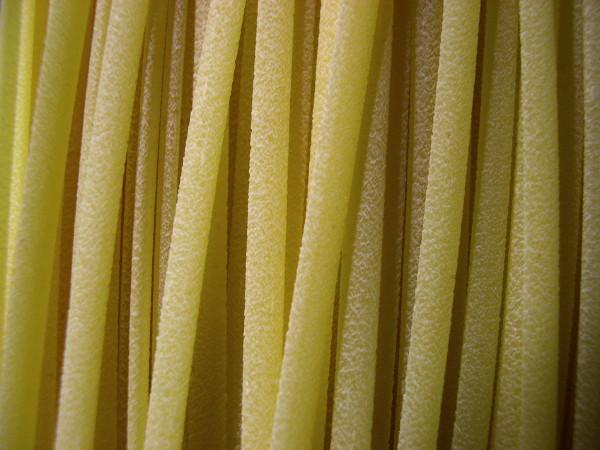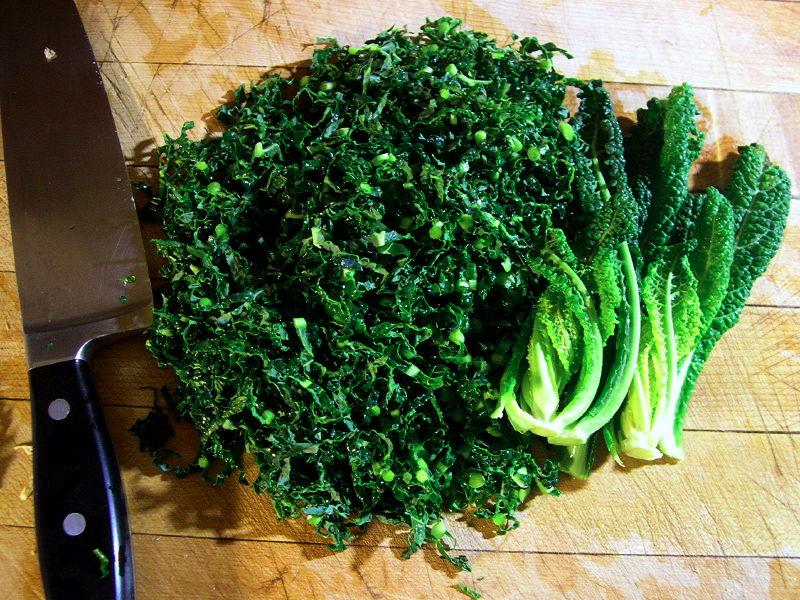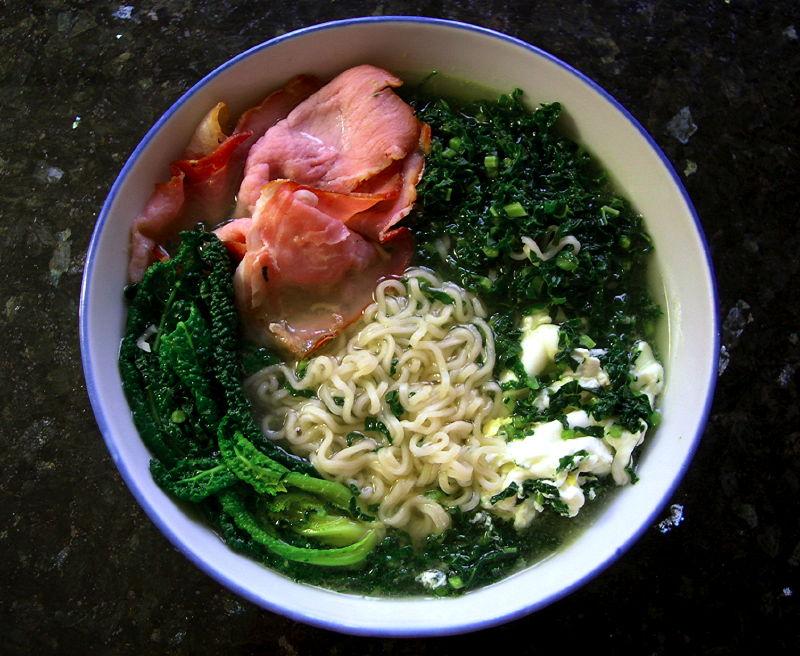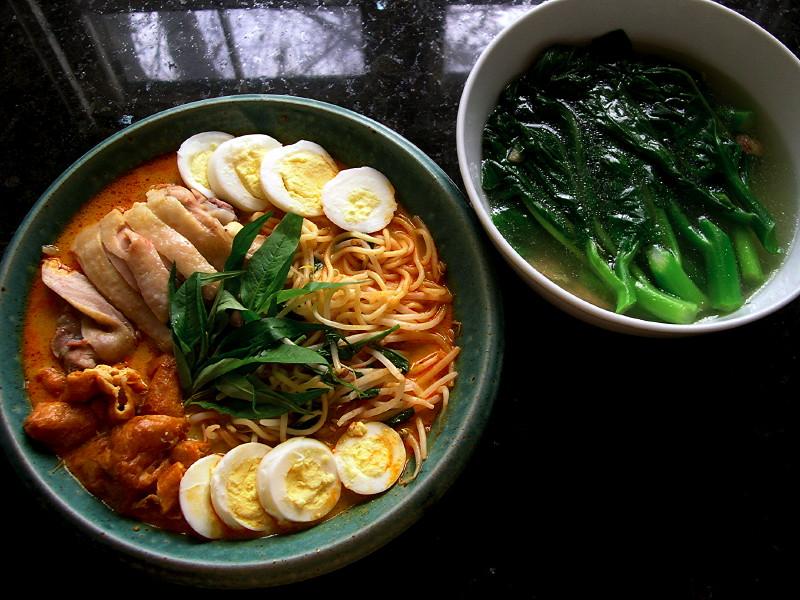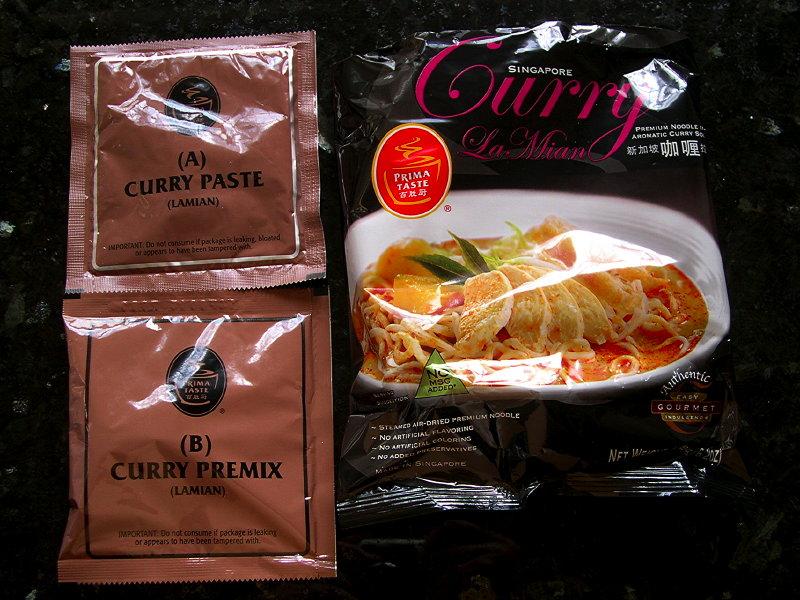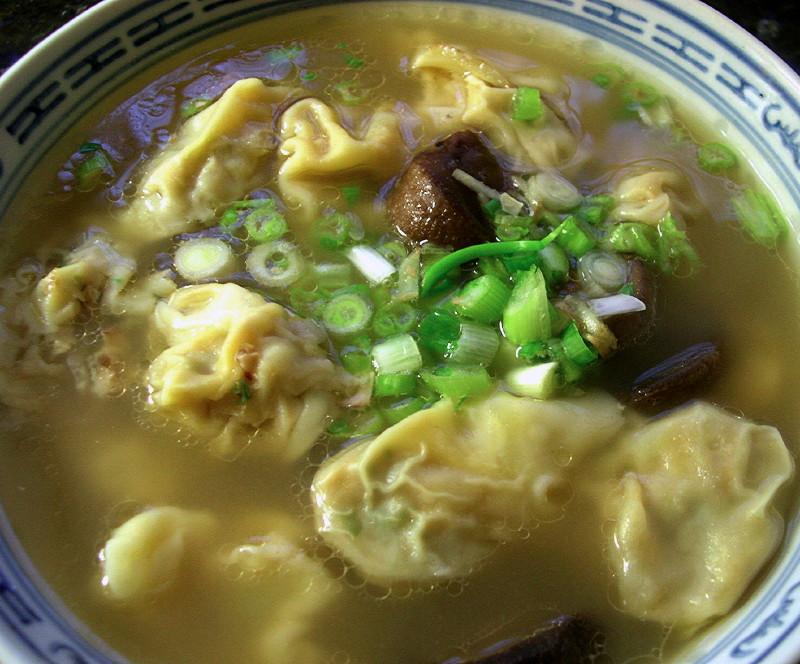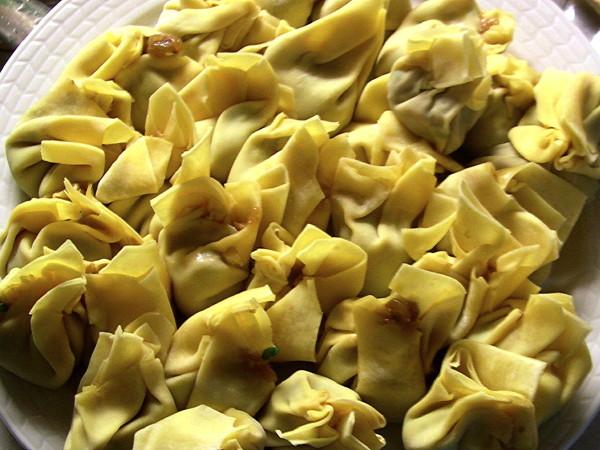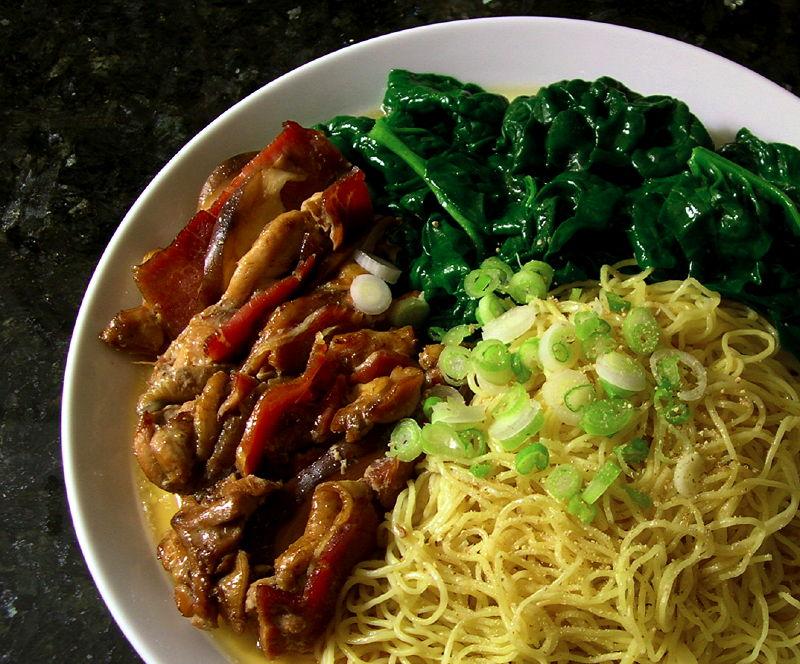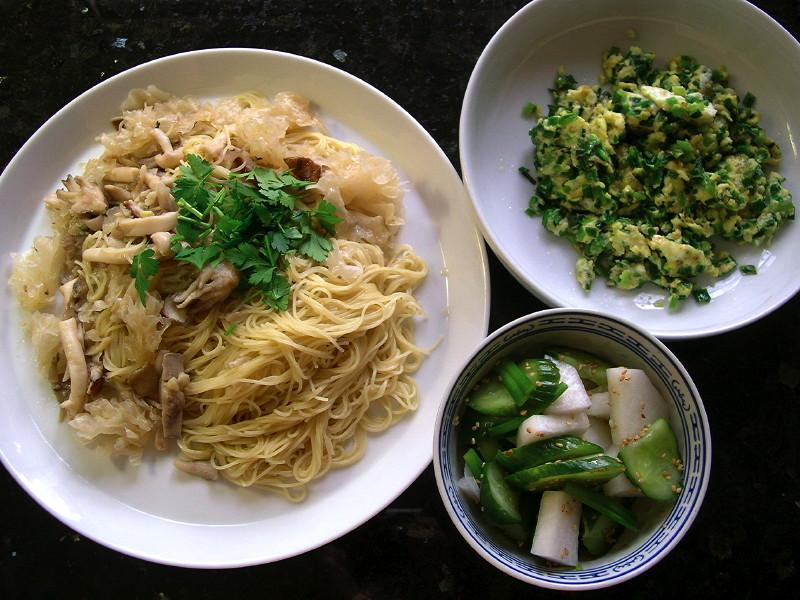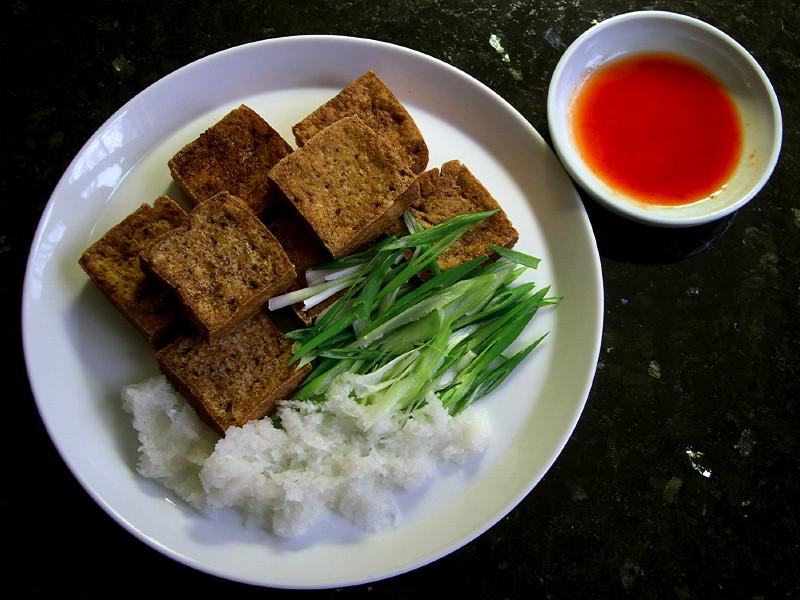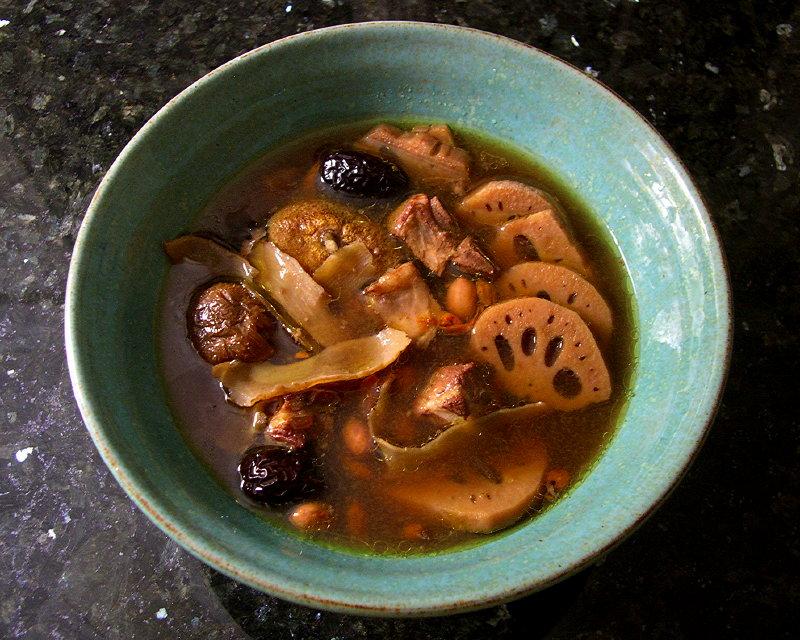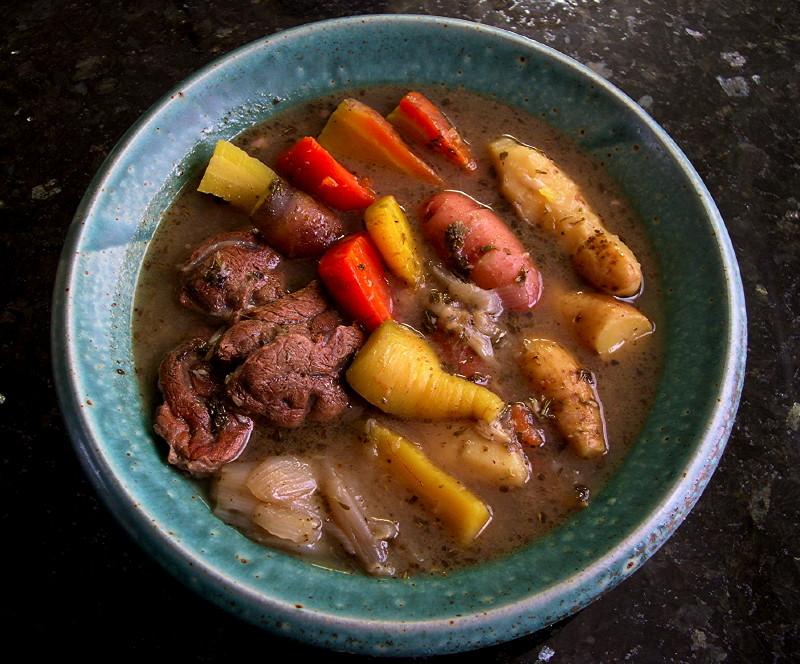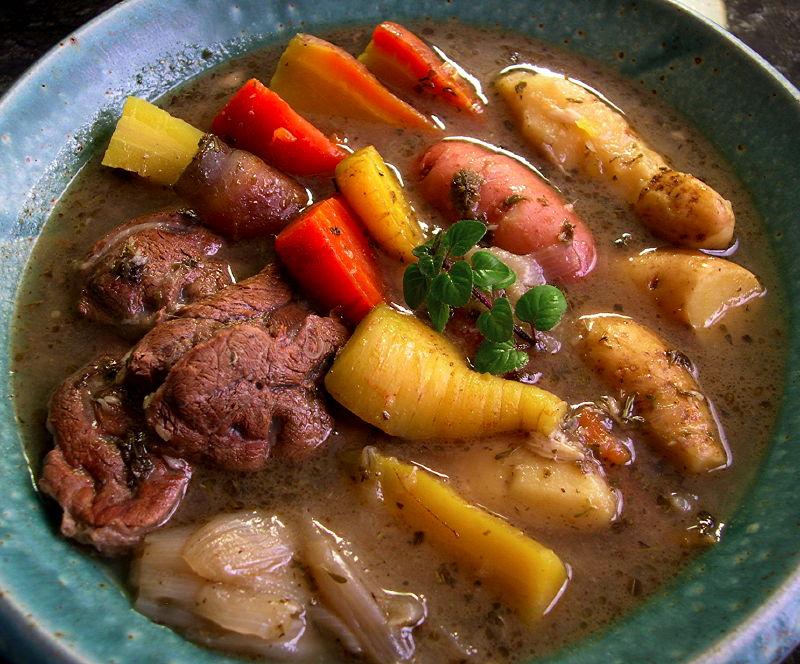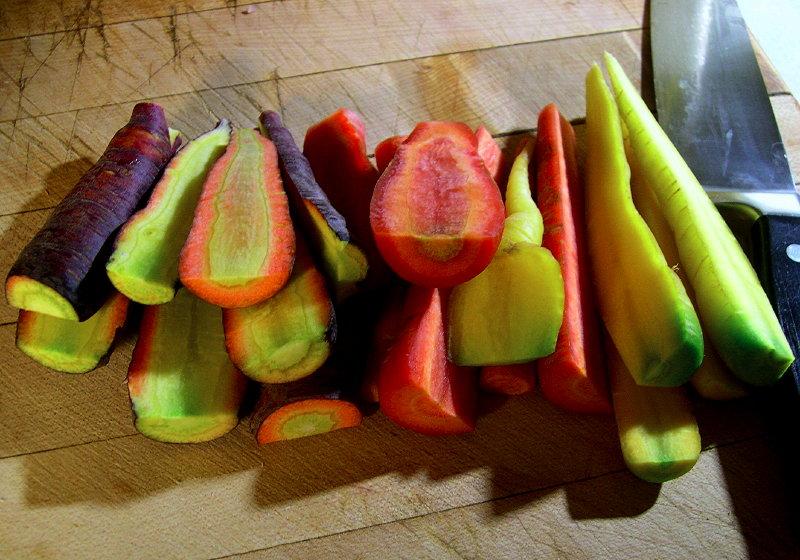-
Posts
3,810 -
Joined
-
Last visited
Content Type
Profiles
Forums
Store
Help Articles
Everything posted by huiray
-
TC Boston episode 7: Restaurant Wars: some commentary here. Katsuji solidifies for me my perception of him as an obnoxious jerk and a snake. Gregory slinks into the background? Whatever happened to the Gregory who piped up on his own at JT about not allowing a dish (like Aaron's) to go out - but now just lets his OWN team fall to pieces and let Kerriann's dish get "put together" if that is even the term for it? I also recall the very first QF in episode 1 when he (Gregory) threw George under the bus. ETA: Well done, Doug. He looks better and better with each episode. The Grey Team also functioned so well, with Doug as EC and Adam as FOH. Reminded me of how well the RW team last season that had Nick Elmi as EC and Travis Masar as FOH worked together. Both were a joy to watch. Nick went on to win the whole thing, which I thought was well deserved. I have similar hopes for this season for a particular person in the same role as well.
-
TC Boston episode 6: "First Thanksgiving": some commentary here. So Katsuji won with a side dish. Of a certain derivation, of course. A little sad to see Stacy go, but she seemed relieved to do so. Gregory gets taken down a few pegs, good! Otherwise, the less said about this episode the better. "Thanksgiving" is not a universally celebrated (in the happy, happy sense) occasion.
-
Saturday 2014-1206 Indy Winter Farmers' Market: Cardoon stems, leafy celery, French breakfast radishes, baby kale, red & yellow & orange heirloom beets, tomatoes (stored from the last fall crop from a farmer I trust), Greek Cristopsomo bread. Goose the Market: Medjool dates, house-produced hot Capicola, Finocchiona, Benton Kentucky Farmer's Ham, freshly ground beef chuck (I watched then cut up really nice looking slabs of chuck and feed them into the grinder). The Fresh Market: Linguine & penne [both Rustichella d'Abruzzo], lumachine [Garofalo].
-
Several recent meals. ------------------------------- Chinese kale (kai-lan) w/ oyster sauce & white pepper. ------------------------------- Rice congee. Lots of julienned ginger, chopped smashed garlic, corn oil, sliced pork belly (skin on), sea salt, ja3 choi3 (a kind of preserved mustard stem), water, simmer, long-grain rice, simmer, tau pok (deep-fried tofu puffs). Served w/ chopped scallions, Tung Choy (Tianjin preserved vegetable), deep-fried shallots. -------------------------------- Duck soup. Double-boiled stuff (Cantonese "dun tong"/Tun Tong. Duck leg quarters, trimmed, chopped into pieces across the bone, scalded w/ hot water; dried Polygonatum odoratum rhizome slices, dried Angelica sinensis slices, dried Codonopsis pilosula rhizome pieces, dried Dioscorea opposita slices, dried goji berries, dried longan meat, dried large semi-smoked Chinese jujubes, water, some salt. All in a heavy thick-walled heavy-lidded porcelain bowl. Steamed for 5-6 hours. --------------------------------- Linguine [Rustichella d'Abruzzo] w/ garlic, Cippolini onions, EV olive oil, sliced-up hot Capicola [House stuff, Goose the Market], marinated artichokes [The Fresh Market brand], and Lacinato kale (Tuscan kale; Cavolo Nero). Seasoning adjusted. Linguine tossed/cooked down further in the pan, with some of the artichoke marinating liquid as well. The linguine:
-
"Sapporo Ichiban Japanese Style Noodles & Chicken Flavored Soup"; with Tuscan kale (chiffonaded & intact "hearts"), Bauernschinken, and an egg loosely poached in situ.
-
• "Singapore Curry La Mian" [Prima Taste]. Augmented w/ mung bean sprouts, daun kesum/daun laksa, tau pok, two hard-boiled eggs, poached chicken thigh (ginger, salt, water). • Kai-lan in the chicken poaching broth. Pic of the pack with enclosed seasonings shown: Note that this is a different one from the "Singapore Laksa La Mian" previously shown in other posts on the dinner and lunch threads. The taste profile is different. On the whole I prefer the Laksa one.
-
But of course no offense is taken, rest assured. For clarity's sake, anyway (and for others reading this) one should not have to add belacan to the first three dishes you mentioned as served. That would be almost unheard of. Depending on the variety of laksa you had there may or may not have been some belacan added into the rempah, the spice mix that is ground together preparatory to cooking and creating the dish. With the chicken rendang, unlikely. Restauranteurs in the West, however, might omit the belacan when making such dishes (even if the recipe they are using would traditionally call for it) for "general Western clientele consumption", much for reasons as you have attested to. Heh. The nasi lemak, if it was traditional nasi lemak, would almost certainly have had some accompanying sambal with it, most likely sambal ikan bilis. Most folks in Malaysia would make this with belacan in it. So - what's that they say - don't watch sausages being made. :-)
-
Shrimp wonton soup. The filling was chopped de-shelled de-veined shrimp, sesame oil, white pepper, chopped scallions, salt, splash of sang chau soy sauce, bit of salt as well. I probably forgot something. The soup was chicken stock simmered w/ "stock fish" (tiny dried anchovies) & dried Chinese mushrooms. Some of the mushrooms were retrieved later and added to the soup. Plus deep-fried wonton skins [Twin Marquis] (HK style) (also used for the wontons above) cut into strips; and mung bean sprouts sautéed w/ garlic, ginger & scallions.
-
For those interested, here's a picture of the "arrayed" plate of chicken slices, ham and mushroom pieces just before steaming, with reference to the post above.
-
Hmm. If kale is chewy then it is old kale. Even then if it is sliced in a FINE chiffonade it is quite palatable - to me, anyway. Or cook it in the "US Southern Style" like with collard greens. I like kale, in general. Baby kale (teeny young leaves, no more than 3-4 inches in total length (stem+ frond) available from Farmers' Markets in the spring, might be an idea. I love these. Otherwise, I often get whole heads of kale (yes, the entire top of the kale plant) offered as fairly young plants and still in their succulent nature on a regular basis from Farmers' Markets, too, in season. What about Lacinato/Tuscan kale? Or Russian kale? (both purple/red and white varieties) p.s. Chinese kai-lan is also a kale. ;-)
-
Galangal, kaffir lime and shrimp paste are widely used and common/necessary ingredients in Nyonya and Malay cuisines, as two examples¶¶ and is also used throughout the rest of SE Asia. Have a look, if you like, at the Nature article on why Western food and "Asian" food differs that I referenced above. ¶¶ Note that "Malay" is NOT the same as "Malaysian".
-
True enough, I suppose - but that alone still doesn't fully explain (IMO) why Thai seems to be favored over Vietnamese, Nyonya, or Malaysian-Singaporean-Chinese-inflected cuisines, where Malay influences are also thrown into the mix; or Malay-Indonesian cuisine, as a few examples.** These other cuisines also use many common or similar ingredients (and many other different ones as well) and taste profiles that also are often intensely flavored and so on. I suppose the widespread availability of Thai restaurants versus other SE Asian restaurants also does factor in (yes, lots more Chinese places both good and bad) - and here, at least in the last dozen years or so, I suspect that the Thai government program to promote and quietly support good Thai food abroad really did have an effect. (See the links in my post above)¶¶ Ditto, perhaps, the availability of proponents for the cuisine who are Westerners themselves, in the same way that Fuchsia Dunlop is a proponent for Sichuanese food. "Familiarity" with a cuisine, insofar as the US is concerned (this is no doubt different elsewhere) ought to suggest that Vietnamese would be on an equal footing - if not anything else because of the country's involvement in Vietnam. Yet Thai has an advantage in the "popular imagination", it seems to me, notwithstanding the certainly widespread popularity and appreciation for Vietnamese cuisine. But here perhaps tourism also had a hand? Thailand remained freely open to Westerners whereas Vietnam was closed off after the Vietnam War and has become accessible to a limited extent only very recently. There is also the issue of "adaptation to the local palate" within the context of this discussion, as also touched upon by some earlier posters - could Thai restauranteurs have "adapted" their food better (speaking in a general sense, and not necessarily with regards to food experts or eGulleteers or food lovers) to, say, the US population? But that is another (although related) matter. ** On reading this old thread, I see that one poster definitely preferred Vietnamese food over Thai food. :-) ¶¶Where one also reads about the Malaysian and Korean governments getting into the game...and, recently, the US government too... As for "dreadful Thai food" which you mention one could certainly get, commentators have pointed out in this context, as well as in the sense of "adaptation"/"spiciness" that Thai food - as the current subject - often gets dialed down in "hotness" for US (and Western) clientele but some chefs neglect to adjust the other components such as sweetness (especially sweetness) so Thai food in the US, for example, sometimes comes out as overly sweet. Add that to the Thai propensity for sweetness anyway, and one has a double-whammy there... With regards to the difference between E/SE/S/wheverelse Asian taste profiles, I have mentioned this study before but it may be of interest in the context of this thread and apropos to some of the comments in earlier posts to cite them again: http://www.nature.com/srep/2011/111215/srep00196/full/srep00196.html ...and a "popular take" on this paper: http://www.dailymail.co.uk/sciencetech/article-2075237/Why-Western-Asian-foods-taste-different-Study-reveals-pair-flavours-totally-different-ways.html
-
Rewarmed steamed chicken: chicken thigh slices (marinated w/ Shaohsing wine, sesame oil, white pepper, dark soy sauce, light soy sauce), interleaved w/ Jinhua-type ham slices & fresh shiitake mushroom slices; then steamed in an enameled metal dish. Eaten w/ skinny wonton noodles & wilted spinach, the steaming liquids (from the chicken) liberally splashed over the noodles and drizzled on the spinach. Chopped scallions, white pepper.
-
Yes, of course Thai food also appeals to me and I like it. I said nothing about disliking it per se. I wondered about why folks in the West seem to prefer it over other E/SE Asian cuisines. But the Thai government program to popularize it in the West was also quite successful, I understand. Perhaps that is a factor. (See here and here for example; or here and here.) And many folks in the US went to Thailand for R&R back in the day when they were fighting in Vietnam, and carried back affinities for both Vietnamese and Thai food - or at least familiarity with them.
-
I find it interesting (no dissing involved) that many people regard Thai cuisine in some manner as noteworthy, and comment (and "like") accordingly. Why is this so? Why does THAI food, over and beyond other E/SE Asian cuisines, have such a hold on the imaginations of the folks here? Is there any, uh, correspondence with the fact that the popular exponents of Thai cuisine in the USA happen to be Caucasians? (Like Thompson, or that Pok Pok fellow) Or is there something about an expectation of VIVID, SPICY flavors, which the USAmerican palate expects of Thai food?
-
Indy Farmers' Market: Yellow/green-shouldered carrots, pastured eggs, lacinato kale, fennel bulbs. Goose the Market: A chunk of foie gras; a couple of duck leg quarters; chunks of Parmigiano Reggiano, Old Kentucky Tomme, Gilead [a new one from Kokoborrego] cheeses; crusty baguette.
-
I *think* I read in one part that the author says something like "no other nation" eats this sort of thing...? If so, perhaps he has not heard of Korean hongeo, although perhaps surströmming is thought by some to be more malodorous. :-) A few links here, here, and here... (also Japanese Kusaya)
-
Well...belacan is made from shrimp/prawns, not fish...but I suppose you are thinking of "seafood" when you say "fishy"? BTW belacan is a necessary ingredient in many SE Asian dishes, including various iconic ones from, for example (but certainly not limited to), Malaysian-Chinese, Nyonya, Malay cuisines. Many curries, sambals, this-and-that preparations too. Just wondering if you have eaten such dishes? Belacan is used in relatively small amounts and it melds into the taste profile of the dish while giving an underlying strength and savory taste factor, after the dish is done. How do you find the Thai or Vietnamese fermented shrimp pastes and sauces - same reaction, or different?
-
• Fresh maitake, shiitake & big white beech ("Seafood") mushrooms, plus rehydrated snow fungus, sautéed w/ chopped smashed garlic in corn oil; then tossed w/ angel hair pasta [De Cecco] and a few scoops of jellied chicken stock (straight into the pan). Tender parsley garnish. • Scrambled eggs w/ Chinese chives (sea salt, peanut oil). • Freshly pickled Persian cucumbers, Korean radish, scallions; w/ toasted sesame seeds.¶ ¶Sliced cucumbers, radish, scallions - tossed w/ salt and left to stand for 15-20 min, then rinsed and drained in a colander. Put into a large ziploc bag. Brewed rice vinegar [Marukan], white rice vinegar [Golden Flower], hon-mirin [Takara], sea salt, toasted sesame seeds [JFC] then went in, the bag was closed and everything sloshed around and stood for a bit.
-
Deep-fried pressed tofu. With scallions & grated Korean radish. Lingham's Hot Sauce + fresh ripe calamansi lime juice. Lotus root soup. Pork spare ribs, garlic, oil (sauté), water, dried cuttlefish, sliced dried Solomon's Seal rhizome, raw peanuts, large sort-of smoked Chinese jujubes, honey jujubes, dried tangerine peel, sliced lotus root, sea salt, dried goji berries towards the end.
-
No. They came from a couple of growers, bought from them at the Farmers' Markets in Indy.
-
Beef shin stew. EV Olive oil, lightly crushed garlic cloves (retrieved then added back in later), sliced beef shin (from a large whole shin [Asia Mart]) (browned on both sides), sea salt [baleine], water, simmer; sliced yellow onion, simmer; Russian Banana (largely peeled), Red Thumb & Rose Finn fingerling tomatoes, red-skinned, red-orange, yellow/green-shouldered heirloom carrots, simmer; shallots, dried Mexican oregano, dried thyme, simmer. Seasoning adjusted. With a sprig of fresh oregano plopped on top: The carrots, washed & trimmed before going into the pot:
- 555 replies
-
- 11
-

-
Ah, is that so? How do you get them, where from, how much, logistics (if any), or supplier etc? (i.e. for someone in the USA)
-
Shame. I get chanterelles fairly regularly in season in the Farmers' Markets (at least two of them, anyway) in my parts. They are very nice at the start of the season (say, July) then deteriorate and in September I've found some of them (as offered) riddled with bugs. Here's a post with a pic of nice stuff I got in July. Around $20/lb, if I remember correctly. Perhaps if you both tried the farmers' markets in your area(s) you might have better luck next time?



